One of the barriers for anyone wishing to begin reading comics for the first time is to figure out *where* to begin. This is true for manga, as well.
In Japan, the manga market is not organized by subject or genres as we speak about them. There is no “romance” or “mystery” section in a manga store. Manga is organized by audience based roughly on gender and age. Shoujo manga are “for girls,” Shounen manga “for boys,” Josei manga are “for women” and Seinen manga are “for men.” To buy a manga series in Japan, you must know the gender/age of its intended audience, the publisher and then the name of the author. Individual magazines might focus slightly more on a genre type (romance, action, sports, adventure) but they are more likely to focus on the perceived overall interests of the intended audience.
Despite the fact that manga are organized by demographic, people often talk about these categories as if they are genres. This is because, over time, certain genre qualities have attached themselves to each demographic. Manga for girls will include romance, princesses and magical girl adventures, the magazines will be published in pinks and reds and have shiny sparkly images. Manga for boys will be full of adventures with pirates and ninjas, have panty shots and cleavage and be printed in bold, bright colors, be about friendship and teamwork and guts. Manga for women will be pastel and full of romance, family and career, while manga for men will be printed with dark colors, and have seductive women, violence and include hobby interests, such as food, drink, golf, trains, etc….
Boy’s Love or Yaoi manga, which is reviewed here by Kinukitty (and recently discussed with excellence by Michael Arthur,) is technically a subset of manga “for women,” while my own field of Yuri used to be considered a subset of manga “for men,” but has now drifted towards being for “whomever reads it,” largely through my and other women’s efforts at reclaiming lesbian stories for ourselves.
Which brings me to today’s topic. In recent years, there has been a slow growth in what I have been offhandedly referring to as a “fifth genre” of Japanese manga magazines. When, during a Twitter conversation on the topic, David Welsh requested that I write about these magazines, Matt Blind jokingly referred to them as a Fifth Column of manga. In many ways I think this is a fitting appellation, as they subvert the more traditional categories of manga. Today’s column, then, is about manga magazines that are for “anyone who wants to read” them.
The pressure to conform to the four basic categories is industry-wide. The Japanese Magazine Publishers Association puts out circulation data for top selling manga magazines every year. These ratings are listed by; For girls, For boys, For men and For women. And yet, there is some leaking around the edges, as more alternative magazines seek out both male and female artists, and male and female readers. These magazines focus less on who is buying and more on telling stories to people who want to read them. Here are some of my nominations for this Fifth Column:
Comic Beam – Published by Enterbrain and Kadokawa Publishing Group
I have previously done an in depth review of this magazine for Mangacast. Beginning with the tagline “Comics for Comics Freaks” right through the list of contributors, this magazine leads the pack in being for people who read manga because they like to read manga. This is not a magazine for children, not for salarymen or careerwoman killing time on a train…nor is it for otaku man-boys looking for adventure and sexual fantasy. Comic Beam leads the pack in actively seeking out the unusual, quirky, experimental and fun/weird. Because the circulation is small, but steady, Comic Beam has nothing at all to lose. Comic Beam is the closest thing to a “Indie” manga magazine in Japan.
IKKI – Published by Shogakukan
Here in the US, Viz Media has picked up several of the IKKI series and are serializing them online on their SigIKKI website. But do not be fooled. SigIKKI is only the very tip of the IKKI iceberg. Viz has the luxury of pulling series that are by popular manga artists or likely to sell to western readers. The actual IKKI magazine in Japan is darker, more emotionally intense and…well, strange…than SigIKKI makes it appear. Even with the limited selection available through SigIKKI, one can get a sense of the underlying darkness that runs through the pages of IKKI magazine.
Morning Two – Published by Kodansha
Morning, Morning Two, Afternoon and Evening are four manga magazines put out by Kodansha Publishing and, like tea one drinks for those times of day, they start strong and hard and mellow out as the day goes on. Morning Two is an especially interesting magazine. As the spin-off of Morning, it has less to lose, and is ready, willing and able to bend the traditional rules of manga. Morning runs an International Comic Competition in which the winners get published in Morning Two. The editors and judges of the competition have made it plain in several langauges that they are dedicated to finding unique and excellent comics from around the world, rather than manga-style entries by wannabees. This desire saturates the pages of Morning Two, in which any number of style, tone and feel live side by side in a comfortably uncomfortable arrangement.
Rakuen Le Paradis – Published by Hakusensha
Where IKKI, Comic Beam and Morning Two are all shoe-horned into the “seinen” category of sales, Rakuen Le Paradis would have to be wedged into the “josei” category. It is a bundle of awesome/weird/cool/distrurbing that I adore. One of the defining elements of Rakuen Le Paradis is the fact that many of the contributing artists are well-establised as “doujinshi” creators. That is, they have built a following by self-publishing and selling their work at events across Japan. By bringing them together in one magazine, along with a few other artists who have just begun to gain professional traction, Rakuen Le Paradis hit the ground running with a small, stable, dedicated consumer base. This is something I’ve not seen before in Japanese manga magazines…and I like it lots. This is also first time I’ve ever seen a magazine include Boy’s Love story by a male creator. Straight, Yuri and Yaoi romance, sex and life all nestle together in this magazine in a way I have never seen in any other magazine.
Comic Yuri Hime – Published by Ichijinsha
I was there at the birth of this magazine. I wasn’t the mother, nor was I the midwife, but I sure was in the room. At first it was a bit tentative, a bit mild. Slowly, it grew into itself, but tended to stay in the area I call “Story A,” where it explored every possible iteration of two girls realizing they like each other.
After a few years, the editors split the magazine into two separate volumes. One, called Comic Yuri Hime, was targeted at women, which meant more emotional life and more adult woman and a slow approach towards telling stories of “lesbians” rather than girls in like. The other, Yuri Hime S, was targeted at men, which meant more fanservice, more moe, more “stuff otaku like.”
This year, the two magazines were re-merged and the magazine was re-launched with a harder edge, a tougher look, a wackier sense of humor and an unapologetic glare at the audience. There’s still plenty of “Story A” and there’s certainly still moe, but there’s also stories of adult women in relationships with other adult women….something remarkably rare in a Yuri magazine. The bottom line – Yuri has become what I always said it was…”for anyone who wants to read it” – and Comic Yuri Hime is taking the front line with me on that position.
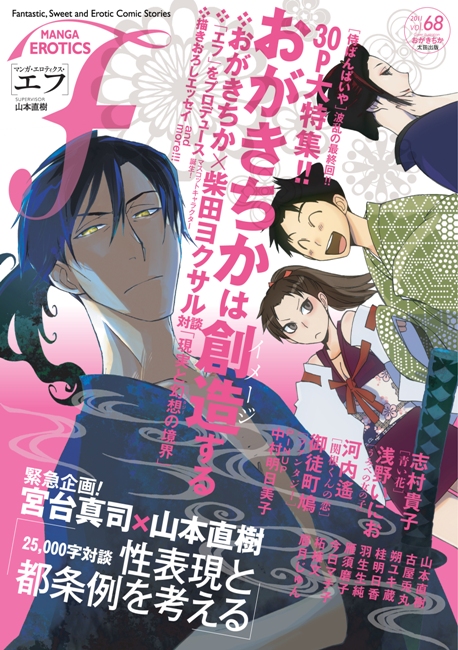
Manga Erotics F – Published by Ohta Publishing
Of all the “Fifth column” magazines, Manga Erotics F is quite possibly the hardest to label simply. It’s not “experimental” in the same way Comic Beam is. There doesn’t seem to be an overarching theme, as in Comic Yuri Hime, or a concerted sales strategy like Rakuen Le Paradis. Instead, there’s stories of explicit sex, next to freakish tales of gang-bangers on the run, next to excruciatingly sweet coming of age stories. And the artists are not simple to define, either. Looked at one way, you could see Manga Erotics F as a “seinen” magazine, looked at in another way, it’s “josei.” Looked at overall, there’s no doubt in my mind, that this belongs in this “Fifth column.”
For those of you reading Hooded Utilitarian and interested in manga, (and willing to delve into Japanese-language publications) these are your target magazines. Shounen Jump is great when you want Pirates and Ninjas (and I am not being sarcastic or dismissive when I say this, either. Shounen Jump series are genuinely great stuff.) But for those looking for comics for readers of comics, these Fifth Column magazines conform to fewer demographic expectations, and risk more to tell exceptional stories by exceptional artists.

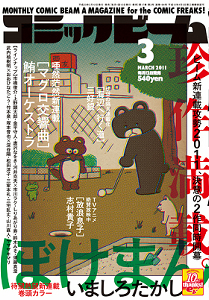
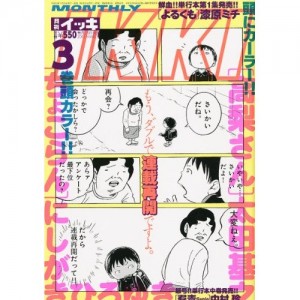
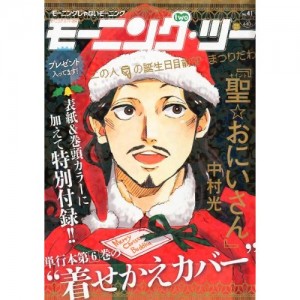
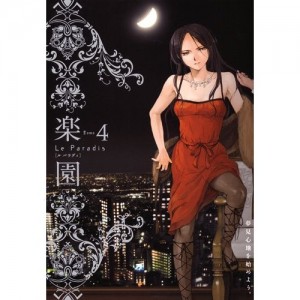

YEEEEES This is what I want to hear about!
The Revolution Will Be Serialized
@funnyanimalbooks – I’m glad to set you on the road to enlightenment. ^_^
@Matt Blind – AMEN. And thank you for the “Fifth Column.”
Actually, Shounen really means youth and Seinen means adulthood (or “completed age.”) This explains why we have manga like Black Butler and Hitman Reborn. I found this out here -> http://bit.ly/bPT06f
@Rilkar – Black Butler is a title marketed to women. It runs in a magazine called GFantasy, that is marketed to both young men and young women and is therefore, neither truly seinen or josei (but is, therefore eligible for the “Fifth Column” I discuss above.)
Your definitions are correct as far as they go, but limited. There’s more to language than one meaning per word and TVTropes is not the most accurate resource on language.
Interesting that these ‘outside’ manga are often published by behemoths like Kodansha.
Do the major manga houses follow a business plan like American book publishing, where a monster like Doubleday will harbor niche imprints? Or like the music industry, where a colossus like EMI or Universal will have smaller labels such as Atlantic?
@Alex – Isn’t that sort of the same thing? Imprint/label?
In this case, Shueisha has a zillion spin-offs of their Jump line of which Super and Ultra tend be be a little less classifiable, and Kodansha and Shogakuka have several different at least partially unclassifiable magazines.
So, I’d say, behemoths know that there’s more than just kids reading and are willing to branch out to capture the harder-core audience. Morning, in particular, is actively seeking the wacky, wild and weird.
Pingback: Mid-week must-reads
I’m surprised that AX didn’t make the list. Is that an oversight or do you not think it qualifies?
@Ian – I knew someone was going to bring that up…. ^_^ If I understand correctly, AX is an anthology, not a magazine. They do not run serialized stories, just do one-shots. (If I am wrong about that, please correct me.) It’s an off-shoot of Garo which *was* a magazine that might have fit the “Fifth column” but is currently defunct.
Erica, AX does run serials that are collected later, such as Shiriagari Kotobuki’s “Jacaranda” and Hanawa’s “Doing Time.” For comparison, “Jacaranda” is collected into one volume, while his serial “DEEP” that ran in Comic Beam ran to eight sprawling volumes.
If Comic Beam’s indie, Ax is underground, I guess– lots of the same artists doing slightly edgier work. It’s also worth noting Frederic Boilet’s “Nouvelle Manga,” though I’ve always found the term more wishful thinking than useful description.
@Bill Randall – Thank you for the correction. I would, then, include AX. Alex. Chalk the oversight up to 1) ignorance; 2) taste and; 3) focus, as I was trying to put the spotlight more on Japanese language magazines.
Thank-you for this list Erica. This is the stuff that’s meant to be read. As you stated, even our alt manga publisher Sigikki is limited to only what can sell. It must be nice to know Japanese, since you have access to everything. I would be able to read Swan in its entirety PLUS any other dance/music/art manga I could ever want. *gush*
I have found Kodansha’s titles released in English pretty quirky compared to other pubs: Nodame Cantabile, Moyasimon, Sayonara Zetsubou-sensei, Mu Shi Shi, Genshiken, and so on. Comparing Shonen and Josei mags anyways, Kodansha’s got the quirkier ones. Only from Kodansha can a manga about classical music and one about parasites get their own anime and drama adaptations.
Great article. I’d love to read a more in depth breakdown of the Japanese Ikki. Although I quite like some of the titles on the sigIkki site I was fairly underwhelmed by others. Would be interested (and frustrating) to know what we’re missing out on!
@Oliver – So,learn Japanese. It’s not insurmountable, alien or impossible. Like anything worth doing, it just takes time and effort.
@Jim – I will be doing a deeper dive into IKKI at some point on Mangacast. Every month I take a look at one Japanese manga magazine, it happens that I have not yet gotten to IKKI, but I will, probably this spring or summer. Check out my column there. (http://www.mangacast.net/news/author/ericaf)
Pingback: Sing me an Opera
Pingback: From the stack: Wandering Son vol. 1
Pingback: Undiscovered Ono